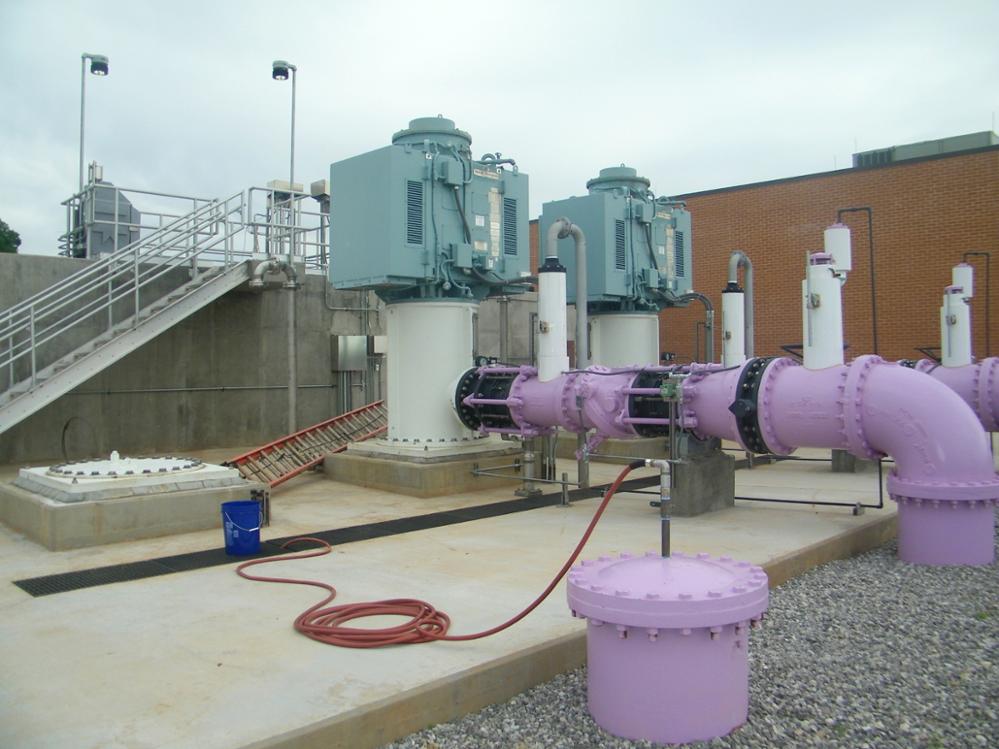Ask an expert: Direct and indirect potable reuse provides much-needed water supply Posted on February 14, 2024

While Texas primarily relies on river basins and underground aquifers for its water supply, reclaimed wastewater for reuse is a strategy Texas has been implementing for decades and is becoming even more popular. According to the Texas Water Development Board's 2022 State Water Plan, the total annual reuse supply in 2020 accounted for nearly 4 percent of the total water supply for Texas, and supply from water reuse is expected to grow to approximately 15 percent statewide between 2020 and 2070. Implementing direct potable reuse contributes significantly toward ensuring a sustainable water future for Texas.
Erika Mancha, the Director of Conservation & Innovative Water Technologies at the Texas Water Development Board (TWDB), shared some background on direct and indirect potable reuse in Texas and explained the benefits of this water supply source that is growing in popularity.
What are direct and indirect potable reuse?
There are two major categories of water reuse: direct and indirect. Both categories can be used for potable (drinkable) purposes.
Direct potable reuse treats reclaimed municipal wastewater to drinking water standards and introduces the treated water either 1) directly into a public water system or 2) into a raw water supply immediately before the water enters a conventional water treatment plant.
Indirect potable reuse treats reclaimed municipal wastewater to drinking water standards to augment drinking water supplies by discharging it to a water body, such as an aquifer or reservoir, and then retrieving the water for subsequent treatment and potable consumption.
Why are water systems using these methods?
Public entities are considering direct and indirect potable reuse to diversify their drinking water supplies and help meet the challenges of population growth, increasing water demand, and drought conditions.
It provides public entities with another tool in their toolbox. Adding an alternative water source allows public entities to rely less on conventional sources, such as groundwater and surface water, which can diversify their water supplies and enable them to meet the future needs of their customers.
How many water systems in Texas utilize direct and indirect potable reuse?
Texas was home to the first direct potable reuse facility in the state and nation. The Colorado River Municipal Water District has operated the Raw Water Production Facility in Big Spring since 2013. There was also a temporary direct potable reuse facility in Wichita Falls in 2014–15, and two more direct potable reuse projects are currently in the works in El Paso and Liberty Hill.
There are five indirect potable reuse operating facilities in Texas:
-
El Paso Water Utilities operates the Fred Hervey Reclamation Plant, recharging the Hueco Bolson Aquifer since 1985.
-
North Texas Municipal Water District operates the East Fork Raw Water Supply Project, polishing water using wetlands and augmenting the Lavon Lake since 2009.
-
Tarrant Regional Water District operates the George W. Shannon Wetland Water Reuse Project, polishing water using wetlands and augmenting the Richland Reservoir.
-
The City of Abilene operates the Hamby Water Reclamation Facility, augmenting Lake Fort Phantom Hill since 2015.
-
The City of Wichita Falls has operated the Wichita Falls Resource Recovery Facility augmenting Lake Arrowhead since 2017.
The Innovative Water Technologies team at the Texas Water Development Board recently created a map showing existing indirect and direct potable reuse operating facilities and future direct potable reuse water management strategies included in the 2022 State Water Plan.
How do water experts assure the public that potable reuse is safe when the water returns to the tap?
The Texas Commission on Environmental Quality (TCEQ), the state’s regulatory agency, ensures drinking water for public water systems is safe by reviewing and approving direct potable reuse projects prior to construction—and implementing water quality and monitoring requirements after construction—for all potable reuse projects. The TCEQ recently published the Direct Potable Reuse for Public Water Systems guidance manual explaining how direct potable reuse is regulated in Texas and what is required for a public water system to receive approval.
Additionally, the treated municipal wastewater undergoes advanced treatment, built upon Reliability, Redundancy, Robustness, and Resilience— the “four Rs framework.” The TWDB funded studies to provide resources, documents, and water quality testing to increase confidence in the safety and effectiveness of direct potable reuse. In 2012, the TWDB funded a study to develop a resource document that provides scientific and technical information to public entities interested in implementing direct potable reuse projects in Texas. In 2015, the TWDB also funded a study that tested the water quality of the full-scale direct potable reuse facility at Big Spring, Texas. Samples from various locations in the treatment train were analyzed for pathogens, pharmaceuticals, hormones, and more. The results showed that the facility produced very high-quality water, and the treatment was effective.
National organizations, such as the WateReuse Association and American Water Works Association, provide resources to stakeholders to empower them in their reuse journey.
About Erika Mancha
As the TWDB’s Director of Conservation & Innovative Water Technologies, Erika Mancha and her team work on Texas' future water supplies by advancing conservation and alternative water supplies, such as water reuse, aquifer storage and recovery, desalination, and rainwater harvesting. She joined the TWDB in February 2013, and throughout her tenure, her focus has been water reuse and desalination. Erika received her B.S. in Engineering from Smith College and an M.S. in Civil Engineering from The University of Texas at El Paso.
This article is posted in Water Planning / Technology / Water Supply .